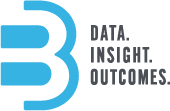
Kelly Bennett
Co-Founder and CEO
As a busy 2022 wound down, I finally had time to read some of the more interesting ‘things to watch for in 2023’ thought pieces sitting in my inbox. Continued capital discipline as the key indicator of good governance; seismicity; China-India-Russia in the global crude market; ESG is not dead, just changing; the Inflation Reduction Act is a pot of gold; quantifying avoided emissions; SEC disclosures; rapid carbon market growth – prognosticators had no shortage of issues to keep track of. For obvious reasons, particularly interesting to me were those referencing water as a key concern in 2023.
Pickering Energy’s piece Regaining Control of the Energy Narrative is an example. In it, Dan Romito aptly points out that ESG stakeholders have placed disproportionately more emphasis on emissions at the expense of water in corporate evaluations. This is true all while US and European emissions reduction data show decades of progress. These emissions statistics show a very positive trend vis-à-vis constant, negative headlines about water. In any given week, one can read about implications of Colorado River water shortages for tens of millions of people, the exposed lakebed of the drying Great Salt Lake causing airborne toxic salt drift, a wave of ski resort closures in the Northeast due to warm temperatures and lack of snow. These are tangible impacts on large populations of people and the companies that produce the energy, goods, and services needed to support our economy. It’s no wonder that groups like Pickering expect demands for water-related disclosure to gain steam in the coming year.
The challenge with water is that quantifying it to measure corporate responsibility or business risk is not as straightforward as emissions. Water affects many facets of an operation, sometimes in ways that we are still learning. Historically, these interactions have not been well defined or accounted for, either from a volumetric, cost, or risk standpoint. Unraveling these complexities is the main focus of the work we are doing in the Oilfield Water Stewardship Council to develop the WaterSage Disclosure Standard and Certification. Gaining precision in defining and recording cost drivers is the core of B3’s Cost Index platform. Both programs have required more than a year of collaborative work with a diverse group of companies and external stakeholders to ensure that we are capturing the right metrics and the proper means for their measurement. The progress to date suggests that arriving at a more concrete set of objective standards and protocols for generating consistent, uniform disclosures across companies will drive operational efficiencies. In addition, these metrics create real opportunities for differentiation based on metrics that matter.
My crystal ball tells me that water-related disclosure will be a moving target for a long time, largely because the context for water use and management is constantly changing and not fully understood. Behaviors and technologies deemed best practices today may very well be frowned upon in a few years. Water management is fundamentally very dynamic, and this complexity is compounded by numerous external factors, some of which are uncontrollable and unpredictable. The evolution of disclosure will be iterative. Competitive positioning dictates that it will be far better for companies to participate in the development process to advocate for the right metrics than sit on the sidelines and wait.
EMPOWERING SMART WATER MANAGEMENT
B3 Insight is building the definitive source for water data. We empower smart water management with data-driven intelligence for responsible and profitable decisions about water resources. Whatever your needs, B3 Insight’s OilfieldH2O can positively impact your water management and drilling completions – contact us at [email protected] or 720-664-8517 to learn more.




